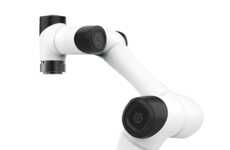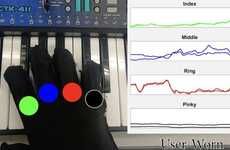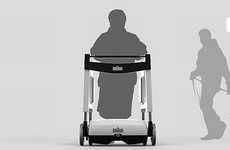
The Eye-Controlled Robotic Arm Feeding Technology Helps the Handicapped
Meghan Young — June 19, 2012 — Tech
Many people take for granted the simple act of eating, but those who have been seriously injured, handicapped for life or simply getting too old to adequately feed themselves know too well that it can be as arduous as climbing Mount Everest in winter; the Eye-Controlled Robotic Arm Feeding Technology (iCRATE) has been developed to help these individuals do this most basic act with ease.
Created by a team of electrical and engineering students at the Northeastern University, Eye-Controlled Robotic Arm Feeding Technology is quite intuitive. A person simply needs to look down at the plate of food in front of them and the arm will scoop up a spoonful and bring it to his or her mouth. A cheaper version compared to similar devices, it can cost up to $800 is mass-produced.
Created by a team of electrical and engineering students at the Northeastern University, Eye-Controlled Robotic Arm Feeding Technology is quite intuitive. A person simply needs to look down at the plate of food in front of them and the arm will scoop up a spoonful and bring it to his or her mouth. A cheaper version compared to similar devices, it can cost up to $800 is mass-produced.
Trend Themes
1. Assistive Robotics - The Eye-Controlled Robotic Arm Feeding Technology is a prime example of the potential of assistive robots to help those with disabilities.
2. Eye-tracking Technology - As eye-tracking technology advances, opportunities emerge for new applications, such as controlling robotic arms for feeding assistance.
3. Affordable Assistive Devices - The iCRATE is a relatively affordable assistive device with disruptive potential in the medical device industry.
Industry Implications
1. Medical Devices - The iCRATE opens opportunities for further innovation and competition in the medical device industry.
2. Assistive Technology - The Eye-Controlled Robotic Arm Feeding Technology is part of the growing field of assistive technology that presents opportunities for innovation and development.
3. Robotics and Automation - The iCRATE is an example of the potential for innovation in the field of assistive robotics and automation.
2.4
Score
Popularity
Activity
Freshness























